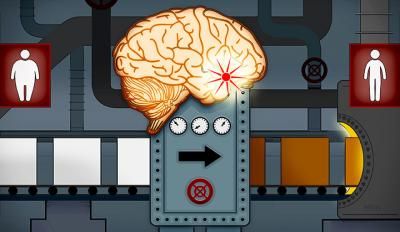Many young heart attack patients, especially women, unaware of risk
Only half of younger heart attack patients believed that they were at risk before the onset of an attack, and even fewer discussed health risks with their doctors, according to Yale School of Public Health researchers. The findings were more pronounced among women than men.
The new study, led by the Yale School of Public Health and published in the Journal of the American College of Cardiology, examined 3,501 heart attack survivors and found that only 53% had considered themselves at risk. Even fewer, 46%, of the patients reported being told they were at risk by a healthcare provider, and only 49% reported discussing heart disease and risk modification with a doctor.
Women were 11% less likely than men to be told by their doctors that they were at risk for a heart attack and were 16% less likely to report having a healthcare provider discuss heart disease and ways that they could reduce their risk.
“We’ve made great strides in heart disease awareness in recent decades, but our findings suggest there is more work to be done,” said Erica Leifheit-Limson, the study’s lead author and an associate research scientist at the Yale School of Public Health. “Many younger women and men, even those with multiple cardiac risk factors, are not receiving adequate counseling on heart disease.”
Each year in the United States more than 15,000 women under the age of 55 die from heart disease, ranking it as a leading cause of death for this age group. Moreover, younger women are more likely to die after being hospitalized for a heart attack than men of the same age.
Leifheit-Limson and colleagues used data from the VIRGO (Variation in Recovery: Role of Gender on Outcomes of Young AMI Patients) study to analyze medical records and the results of interviews with heart attack patients from more than 100 hospitals in the United States and Spain. Study participants ranged in age from 18 to 55.
Researchers compared the prevalence of five cardiac risk factors (diabetes, high cholesterol, hypertension, obesity, and smoking status) as well as reports of clinical counseling on heart disease. They found that 97% of the women and 99% of the men had at least one risk factor, and nearly two-thirds had three or more. The most common risk factor was high cholesterol.
About half the U.S. patients reported that prior to their heart attack, they considered themselves at risk, were told by a healthcare provider they were at risk, or had a healthcare provider talk to them about heart disease and ways to lower their risk. Spanish study subjects were less likely to report they were aware of the risk. Only 36% reported a prior perceived risk of a heart attack, and only 22% said that a healthcare provider had spoken with them about heart disease and ways to reduce their risk.
“Current clinical guidelines emphasize risk assessment and patient education, but these are not being adequately applied to younger individuals at risk for heart disease, particularly younger women,” said Judith Lichtman, associate professor at the Yale School of Public Health and the study’s senior author. “We need to empower individuals to seek information about heart health, and we need to ensure that care providers are educating patients about risk factor management.”
Most read news
Topics
Organizations
Other news from the department science

Get the life science industry in your inbox
By submitting this form you agree that LUMITOS AG will send you the newsletter(s) selected above by email. Your data will not be passed on to third parties. Your data will be stored and processed in accordance with our data protection regulations. LUMITOS may contact you by email for the purpose of advertising or market and opinion surveys. You can revoke your consent at any time without giving reasons to LUMITOS AG, Ernst-Augustin-Str. 2, 12489 Berlin, Germany or by e-mail at revoke@lumitos.com with effect for the future. In addition, each email contains a link to unsubscribe from the corresponding newsletter.






















































